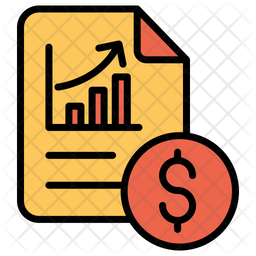WorldWide Fuel Cell Vehicle (FCV) Market, Industry / Sector Analysis Report, Regional Outlook & Competitive Market Share & Forecast, 2019 - 2025 (Includes Business Impact of COVID-19)
- TBI994099
- September 01, 2019
- Global
- 132 pages
- HCCResearch
Fuel cell vehicle (FCV) market size is estimated to reach over USD 18 billion by 2023 and is likely to grow significantly over the forecast period. Fuel cell vehicle sales are anticipated to be valued over 1.2 million units by 2023. This can be mainly attributed to increasing concern to reduce air pollution coupled with high dependency on oil imports.
Fuel cell technology has the efficiency to power airport tugs, forklifts, heavy duty vehicles and passenger vehicles. The technology is likely to gain importance owing to its rapid advancement. In addition, the key automobile manufacturers are spending heavily and are moving towards this technology. These vehicles demonstrate immaculate durability, which specifies significant growth towards the main objectives set by the U.S. Department of Energy. Sale is anticipated to observe stable growth over the forecast period owing to introduction of transit buses and hydrogen fuel cell vehicle market. The innovation and development of the vehicles is anticipated to meet customers’ needs and demands which in turn fuel cell vehicle market size.
Rise in the global hydrogen fuel cell vehicle market share is expected to generate more employment and business opportunities mainly in the R&D department. This technology facilitates in declining local air pollutants and greenhouse gas emissions which in turn diversify energy sources to minimize the need for conventional sources. Proliferating implementation and acceptance of hydrogen vehicles in public transit systems is anticipated to surge the industry demand over the coming few years. According to National Research Council, these vehicles are likely to lessen the dependency on oil. In addition it also helps in reducing the green house gas emissions as well as local air pollution.
Reduced dependency on oil trade is likely to balance the trade deficit among emerging nations. The vehicles operate on hydrogen gas and without emitting harmful radiations. In addition, these automobile are equipped with technologically advanced components and converts hydrogen gas into electricity which compels electric motor to run. The key components include power control units, electric motor, hydrogen storage tank, high output battery and fuel cell stack.
Low noise operations, high power density and high efficiency conversion are anticipated to fuel the industry demand over the forecast period. However, initial high cost required is likely to hamper the demand growth. Strong participation among major players along with stringent environmental norms is likely to act as the key opportunities to the industry over the coming few years.
Density conversion coupled with noise free operations is likely to surge demand in automobile sector. Most of the major suppliers are updating their technology on account of emission standards by regulatory bodies. Durability and low maintenance cost required is anticipated to provide value to the consumers. The above mentioned factors are likely to surge the demand over the forecast period.
Global fuel cell vehicle market is segmented into forklifts, buses, bicycles and motorcycles, boats, submarines, trams and airplanes. The buses segment is likely to account for highest industry share followed by bicycles and motorcycles. Forklifts and airplanes are likely to gain significant growth over the forecast period.
U.S. FCV market share is anticipated to gain significant share owing to stringent government norms and initiatives undertaken in order to develop hydrogen infrastructure. In addition, introduction of shale gas have lowered the cost of natural gas and also facilitates in advancing hydrogen reform technologies, thus making it economical. Asia Pacific fuel cell vehicle market is likely to grow at considerable growth rate owing to stringent government programs promoting these vehicles primarily in emerging nations such as China, South Korea, Vietnam and India.
The key players involved are Cellkraft, Acumentrics SOFC, Altergy Systems, Ballard Power Systems, Ceramic Fuel Cells, BIC Consumer Products and Automotive Fuel Cell Cooperation among others. The FCV market size is anticipated to observe momentous number of new entrants over the forecast period. Other industry participants include Nissan, Toyota Motor, BMW, Audi, Daimler, Riversimple UK, GreenGT, Ballard, Hyundai Korea, Proton Power Systems, Hydrogenics, GreenGT Belgium and VW Group among others.
1 Report Overview
1.1 Research Scope
1.2 Major Manufacturers Covered in This Report
1.3 Market Segment by Type
1.3.1 Global Fuel Cell Vehicle (FCV) Market Size Growth Rate by Type (2019-2025)
1.4 Market Segment by Application
1.4.1 Global Fuel Cell Vehicle (FCV) Market Share by Application (2019-2025)
1.5 Study Objectives
1.6 Years Considered
2 Global Growth Trends
2.1 Production and Capacity Analysis
2.1.1 Global Fuel Cell Vehicle (FCV) Production Value 2014-2025
2.1.2 Global Fuel Cell Vehicle (FCV) Production 2014-2025
2.1.3 Global Fuel Cell Vehicle (FCV) Capacity 2014-2025
2.1.4 Global Fuel Cell Vehicle (FCV) Marketing Pricing and Trends
2.2 Key Producers Growth Rate (CAGR) 2019-2025
2.2.1 Global Fuel Cell Vehicle (FCV) Market Size CAGR of Key Regions
2.2.2 Global Fuel Cell Vehicle (FCV) Market Share of Key Regions
2.3 Industry Trends
2.3.1 Market Top Trends
2.3.2 Market Drivers
3 Market Share by Manufacturers
3.1 Capacity and Production by Manufacturers
3.1.1 Global Fuel Cell Vehicle (FCV) Capacity by Manufacturers
3.1.2 Global Fuel Cell Vehicle (FCV) Production by Manufacturers
3.2 Revenue by Manufacturers
3.2.1 Fuel Cell Vehicle (FCV) Revenue by Manufacturers (2014-2019)
3.2.2 Fuel Cell Vehicle (FCV) Revenue Share by Manufacturers (2014-2019)
3.2.3 Global Fuel Cell Vehicle (FCV) Concentration Ratio
3.3 Fuel Cell Vehicle (FCV) Price by Manufacturers
3.4 Key Manufacturers Fuel Cell Vehicle (FCV) Plants/Factories Distribution and Area Served
3.5 Date of Key Manufacturers Enter into Fuel Cell Vehicle (FCV) Market
3.6 Key Manufacturers Fuel Cell Vehicle (FCV) Product Offered
3.7 Mergers & Acquisitions, Expansion Plans
4 Market Size by Type
4.1 Production and Production Value for Each Type
| read more...




















